Demand Employment

What is the relationship between economic recovery and employment rates ?
The relationship between economic recovery and employment rates is influenced by various factors such as increased aggregate demand, investment in the economy, government policies, and global factors. As the economy recovers, businesses start hiring more workers to meet the growing demand for goods and services, leading to an increase in employment rates. However, this relationship is complex and requires a deeper understanding of the different aspects involved.
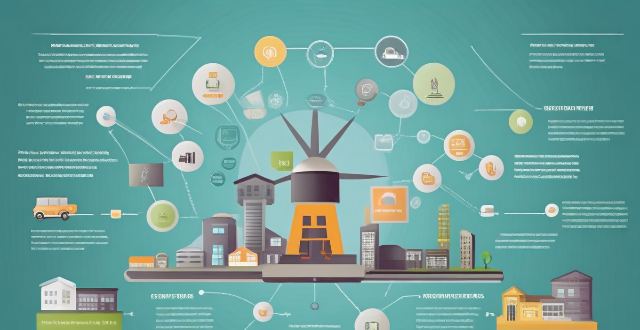
What impact does energy transition have on employment and job creation ?
The energy transition from fossil fuels to renewable sources significantly impacts job creation and employment. This shift brings growth in renewable energy sectors, green economy expansion, research & development, infrastructure development, and energy efficiency services. However, it also causes employment shifts such as a decline in fossil fuel industries, skill transition, geographical impact, supply chain effects, and policy-driven changes. Managing these challenges through strategies like reskilling programs and supportive policies is crucial for a just and equitable energy future.
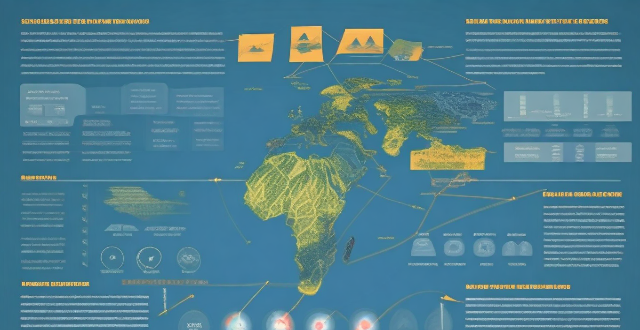
How does climate change influence the future of remote work and virtual employment ?
The article discusses the impact of climate change on the future of remote work and virtual employment. It states that rising temperatures, extreme weather events, and environmental concerns are driving factors for the shift towards remote work arrangements. As a result, there is an increasing demand for remote work options, technology advancements to support virtual employment, and a changing work culture that focuses on results rather than physical presence. The article concludes that embracing these changes can lead to a sustainable and efficient future of work.

What is the impact of climate change on agricultural employment ?
Impact of Climate Change on Agricultural Employment: - Reduced Crop Yields due to droughts, floods, and loss of biodiversity can lead to job losses. - Changes in Cropping Patterns, such as shifting to new crops or shortened planting seasons, may require different skillsets and reduce employment opportunities. - Increased Pest and Disease Pressure can result in more labor for monitoring and management but also potential job losses from crop failures. - Infrastructure Damage and Displacement caused by extreme weather events can affect farming operations and employment levels. - Adaptation and Resilience Efforts, including developing resilient crop varieties and adopting sustainable farming practices, can create new job opportunities.

How do extreme weather events caused by climate change affect employment rates ?
This article explores the impact of extreme weather events caused by climate change on employment rates in various sectors, including agriculture, construction, and tourism. It highlights the vulnerability of these sectors to extreme weather events such as droughts, floods, heatwaves, hurricanes, tornadoes, wildfires, storms, rising sea levels, and reduced snowfall. The article also discusses potential mitigation strategies that can help reduce the impact of these events on employment rates in the affected sectors.

What role do environmental organizations play in promoting climate-friendly employment ?
Environmental organizations are crucial in promoting climate-friendly employment through various roles including advocacy and policy influence, education and training, research and data collection, direct action and intervention, and collaboration and partnership building. They lobby for green policies, promote corporate responsibility, collaborate internationally, raise public awareness, offer skill development programs, partner with educational institutions, analyze employment trends, study economic impact, document success stories, fund sustainable projects, work with local communities, build NGO capacity, organize networking events, partner with government agencies, and form alliances with businesses. These efforts help create a more sustainable future while ensuring job security and economic prosperity for communities around the world.

How does self-employment affect my personal income tax calculation ?
Self-employment affects personal income tax calculation by requiring net income reporting, quarterly estimated tax payments, utilizing deductions and credits, filing specialized forms, and paying self-employment tax. Staying organized and informed about tax laws is crucial for effective tax management.

How do sports economists analyze the demand for sports products and services, and what factors influence this demand ?
The demand for sports products and services is analyzed by sports economists using various methods such as market research, econometric models, surveys, historical data analysis, experimental designs, social media analytics, focus groups, case studies, cross-sectional analysis, and time series analysis. Factors influencing this demand include income levels, price, population demographics, health consciousness, technology, media coverage, fashion trends, celebrity endorsements, team performance, economic conditions, government policies, social trends, and the availability and price of substitutes or complements.
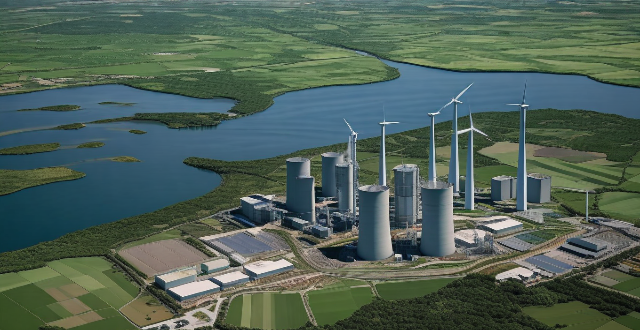
How is the demand for electricity affecting the energy market ?
The demand for electricity is a crucial factor that affects the energy market. As the world becomes more reliant on electricity, the demand for it continues to grow. This increased demand has significant implications for the energy market, including the types of energy sources used, the cost of electricity, and the environmental impact of energy production. The key points include population growth, economic development, technological advancements, diversification of energy sources, investment in infrastructure, cost of electricity, environmental impact, renewable energy sources, energy efficiency, smart grid technology, and electric vehicles. By considering sustainable energy solutions, we can work towards a more sustainable and equitable energy future.

Which economic indicators are used to measure the health of the labor market ?
The health of the labor market is crucial for any economy, and several economic indicators are used to measure it. These include the unemployment rate, employment growth, labor force participation rate, wage growth, and job openings and vacancies. The unemployment rate measures the percentage of the labor force that is unemployed but actively seeking work, while employment growth refers to the number of new jobs created over a specific period. The labor force participation rate measures the percentage of working-age individuals who are either employed or actively seeking employment, and wage growth reflects the earning power of workers. Job openings and vacancies provide insight into the demand for labor within the economy. By monitoring these indicators regularly, stakeholders can identify trends and potential issues early on, allowing them to take proactive steps to address any challenges and promote a healthy labor market.

How will the rise of automation and artificial intelligence affect employment opportunities in future cities ?
The rise of automation and artificial intelligence (AI) is expected to have a significant impact on employment opportunities in future cities. This transition will likely result in decreased demand for certain jobs, particularly those involving repetitive tasks or moderate skills, while increasing the need for specialized skills in areas like software development and data analysis. To adapt to these changes, strategies such as lifelong learning, job retraining programs, and collaboration between businesses and educational institutions are recommended. It is crucial for individuals, governments, and businesses to proactively prepare for these shifts to ensure a diverse and resilient workforce.

What is the impact of technology on future employment opportunities ?
The Impact of Technology on Future Employment Opportunities Technology has had a significant impact on the job market, and this trend is expected to continue in the future. Here are some ways technology will affect employment opportunities: - Increased Automation: As technology advances, many jobs that were previously done by humans are now being automated. This means that there will be fewer jobs available for people in industries such as manufacturing, transportation, and customer service. However, new jobs will also be created in areas such as robotics, artificial intelligence, and data analysis. - Remote Work: The rise of technology has made it possible for people to work from anywhere in the world. This has led to an increase in remote work opportunities, which can be beneficial for both employers and employees. Employers can save money on office space and other expenses, while employees can enjoy more flexibility and a better work-life balance. - Digital Skills: As technology continues to evolve, there will be a greater demand for workers with digital skills. This includes not only programming and software development but also skills related to cybersecurity, digital marketing, and social media management. Those who have these skills will likely have an advantage in the job market. - New Industries: Technology is constantly creating new industries and job opportunities. For example, the rise of e-commerce has led to the creation of new jobs in online sales, digital marketing, and logistics. Similarly, the growth of renewable energy sources has created new jobs in solar panel installation and maintenance. In conclusion, technology will have both positive and negative effects on future employment opportunities. While some jobs may become automated or obsolete, new jobs will also be created in industries that didn't exist before. It's important for workers to stay up-to-date with changing technology trends and develop the necessary skills to remain competitive in the job market.

What impact do circular economy policies have on employment opportunities ?
Circular economy policies can have a significant impact on employment opportunities across various sectors, with both positive and negative effects. Job creation in recycling and waste management, growth in green technologies, support for small businesses and startups, and education and training programs are some of the positive impacts. However, displacement of workers in traditional industries, skill gaps and reskilling challenges, and economic disruption and market uncertainty are some of the negative impacts. Policymakers should consider both the positive and negative impacts when designing and implementing circular economy strategies to ensure that overall employment opportunities are maximized while still achieving environmental goals.

How will automation affect employment in the coming years ?
Automation is expected to have a significant impact on employment in the coming years, with potential job displacement and income inequality challenges. However, it also presents opportunities for job creation and a shift towards more creative and analytical roles. Skills such as creativity, critical thinking, and emotional intelligence will become increasingly valuable, while continuous learning and adaptability will be crucial for workers to stay relevant. Policy interventions are necessary to mitigate inequality and support an adaptable and resilient workforce.

How do fuel vehicles affect the economy, particularly in terms of employment in the oil industry ?
The text discusses the impact of fuel vehicles on employment in the oil industry. It highlights that the industry offers a range of jobs from exploration and extraction to refining, distribution, and sales. However, it also notes challenges such as market volatility, environmental concerns, and technological advances that could affect job stability in the sector. The text concludes by emphasizing the need for strategies that promote economic stability while encouraging sustainable practices and innovation.

How does green employment contribute to sustainability ?
Green employment, or green-collar jobs, are essential in achieving sustainability by promoting environmentally friendly practices, enhancing social well-being, and fostering economic growth through innovation and job creation. These jobs focus on renewable energy, waste reduction, sustainable agriculture, ecotourism, and more. By embracing these sustainability careers, we can build a resilient future for all.

How do economic indicators reflect the standard of living in a country ?
Economic indicators such as GDP, income distribution, employment rates, healthcare and education spending, housing affordability, and inflation rates are used to gauge the standard of living in a country. These metrics provide insights into economic performance and health, reflecting aspects like access to education, healthcare, housing, employment opportunities, and consumer goods. A higher GDP per capita, lower Gini coefficient values, higher employment rates, greater healthcare and education spending, affordable housing, and stable or low inflation rates generally indicate a better standard of living. However, these indicators should be considered collectively for a comprehensive understanding of the economic conditions that influence citizens' lives.

What is the impact of fuel vehicles on global oil demand ?
The widespread use of fuel vehicles, especially those poweredThe widespread use of fuel vehicles, especially those powered engines, has significantly influenced global This increased consumption of petroleum-based fuels has led to economic implications such as price fluctuations and dependence on imports, as well as environmental challenges like greenhouse gas emissions and air pollution. Alternatives to fuel vehicles, including electric and hybrid vehicles, public transportation, and active mobility options, offer potential solutions to reduce our reliance on oil and mitigate these negative impacts.

How can we ensure job security in an ever-changing employment landscape ?
In the ever-changing employment landscape, job security is a concern for many professionals. To maintain job security, strategies such as continuous learning, adaptability, networking, performance orientation, personal branding, career planning, financial planning, and mental health management are recommended. These approaches can help professionals stay relevant, demonstrate value, build a positive image, set clear goals, save for emergencies, manage stress, and seek support when needed. By implementing these strategies, individuals can increase their resilience and adaptability, enhancing their job security.

What is the future outlook for gold investment ?
The future outlook for gold investment is influenced by various factors such as economic conditions, monetary policy, supply and demand dynamics, and investor sentiment. Economic uncertainty can drive up the demand for gold as a safe-haven asset, while periods of growth may decrease its value. Central banks' interest rate decisions and money supply changes can also impact gold prices. Supply and demand dynamics, including mining production and jewelry demand, play a role in determining gold availability and price. Finally, investor sentiment towards gold can be shaped by market trends, investment strategies, and overall risk appetite. By monitoring these key factors, investors can make informed decisions about the viability of gold as a portfolio addition in the coming years.

How is the price of carbon credits determined in the carbon trading market ?
The price of carbon credits in the carbon trading market is determined by various factors, including supply and demand, regulatory policies, and market dynamics. The balance between supply and demand significantly affects the price, with high demand increasing the price and oversupply decreasing it. Regulatory policies such as cap-and-trade systems and carbon taxes also play a crucial role in setting limits on emissions and creating incentives for companies to reduce their emissions or purchase carbon credits to offset them. Market dynamics such as speculation, liquidity, and transparency can also impact the price of carbon credits. As awareness of climate change grows, the demand for carbon credits is likely to increase, driving up their price. However, ensuring transparent and efficient operation of the carbon market is essential to maximize its potential benefits for both companies and the environment.

What skills will be in demand for jobs related to climate change adaptation and mitigation ?
The fight against climate change requires a diverse set of skills, including data analysis and modeling, sustainable design, renewable energy, environmental science, urban planning, risk management, communication, education and training, and project management. These competencies are in high demand for jobs related to climate change adaptation and mitigation.

What impact does consumer confidence have on economic recovery ?
Consumer confidence is a key driver of economic recovery. It stimulates growth, boosts employment rates, reduces unemployment, and increases government revenue. To improve consumer confidence, governments should encourage stable economic policies, provide financial education, promote transparency, and invest in infrastructure.
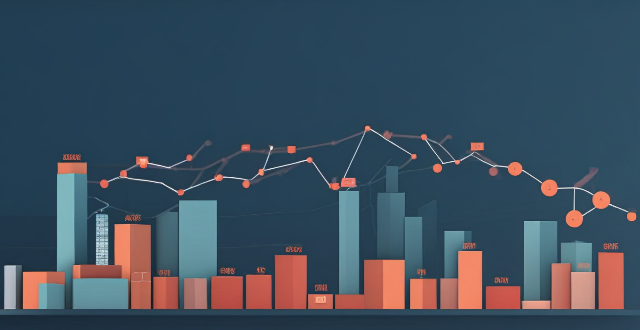
How do economic indicators influence currency exchange rates ?
Economic indicators significantly influence currency exchange rates by reflecting the health and performance of an economy, affecting demand for its currency. Key indicators include Gross Domestic Product (GDP), interest rates, inflation rates, trade balance, political stability, employment data, and consumer confidence. A strong economy typically leads to an appreciation of its currency, while a weaker economy can result in depreciation. These indicators are closely monitored by investors and traders to make informed decisions about buying or selling currencies.

What are the benefits of green jobs ?
Green jobs, also known as sustainable jobs or eco-friendly employment, refer to positions that contribute positively to the environment and help in mitigating climate change. These jobs are often focused on renewable energy, energy efficiency, pollution control, waste management, and environmental conservation. The benefits of green jobs are multifaceted and can be categorized into economic, environmental, and social dimensions. In summary, green jobs offer a triple win by stimulating economic growth, protecting the environment, and enhancing social well-being. As societies continue to prioritize sustainability, the importance of these jobs will only increase, making them a cornerstone of future employment landscapes.

How might a lunar base influence the global economy and job market ?
The establishment of a lunar base could significantly impact the global economy and job market by increasing investment in space technology, creating new industries, driving innovation, and fostering international collaboration. It could also create numerous job opportunities and expand educational opportunities focused on space-related disciplines.

What are the key indicators of economic recovery ?
Economic recovery is a complex process that involves several key indicators. These indicators are used to gauge the health and growth of an economy after a period of decline or recession. Some of the most important indicators of economic recovery include GDP growth, employment rates, consumer spending, business investment, the housing market, inflation rates, trade balance, and stock market performance. Each of these indicators provides valuable insights into the overall health and growth of an economy.
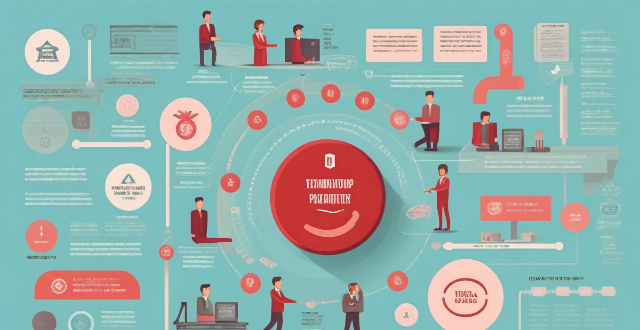
How do green jobs impact economic growth ?
Green jobs can stimulate economic growth by creating new employment opportunities, driving innovation and technological advancements, reducing costs and improving efficiency, enhancing environmental quality and public health, and attracting investment and tourism dollars.

What is the correlation between housing market indicators and the overall economy ?
The housing market is a significant indicator of the overall health of an economy, intertwined with employment, consumer spending, and financial markets. Housing starts and permits signal economic growth; existing home sales reflect consumer confidence; home price indexes affect household wealth and consumer spending; mortgage rates influence home purchases; inventory levels indicate market strength or challenges; builder confidence suggests future construction trends; foreclosure rates reveal economic distress; and rental market trends show limited purchasing options. These indicators provide insight into different facets of the economy, painting a comprehensive picture of the housing market's health and its relationship with the overall economic condition.